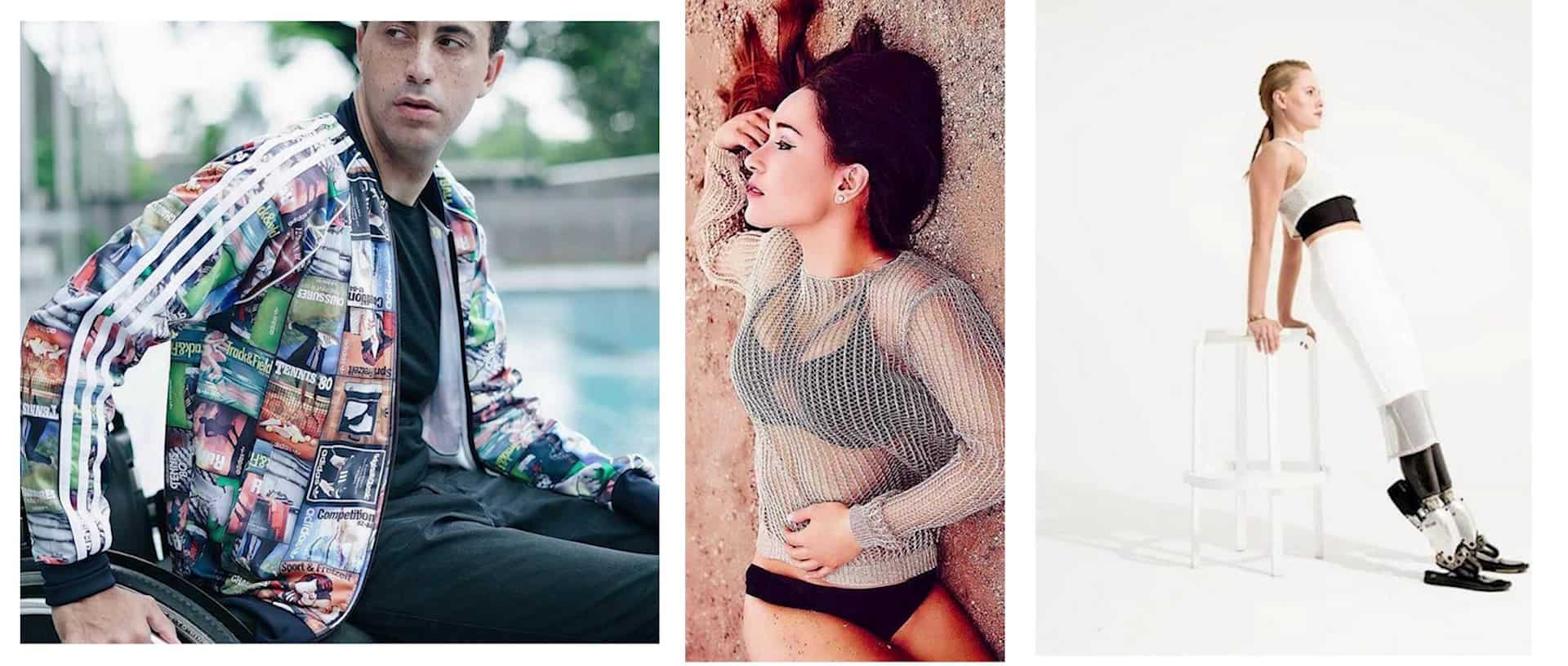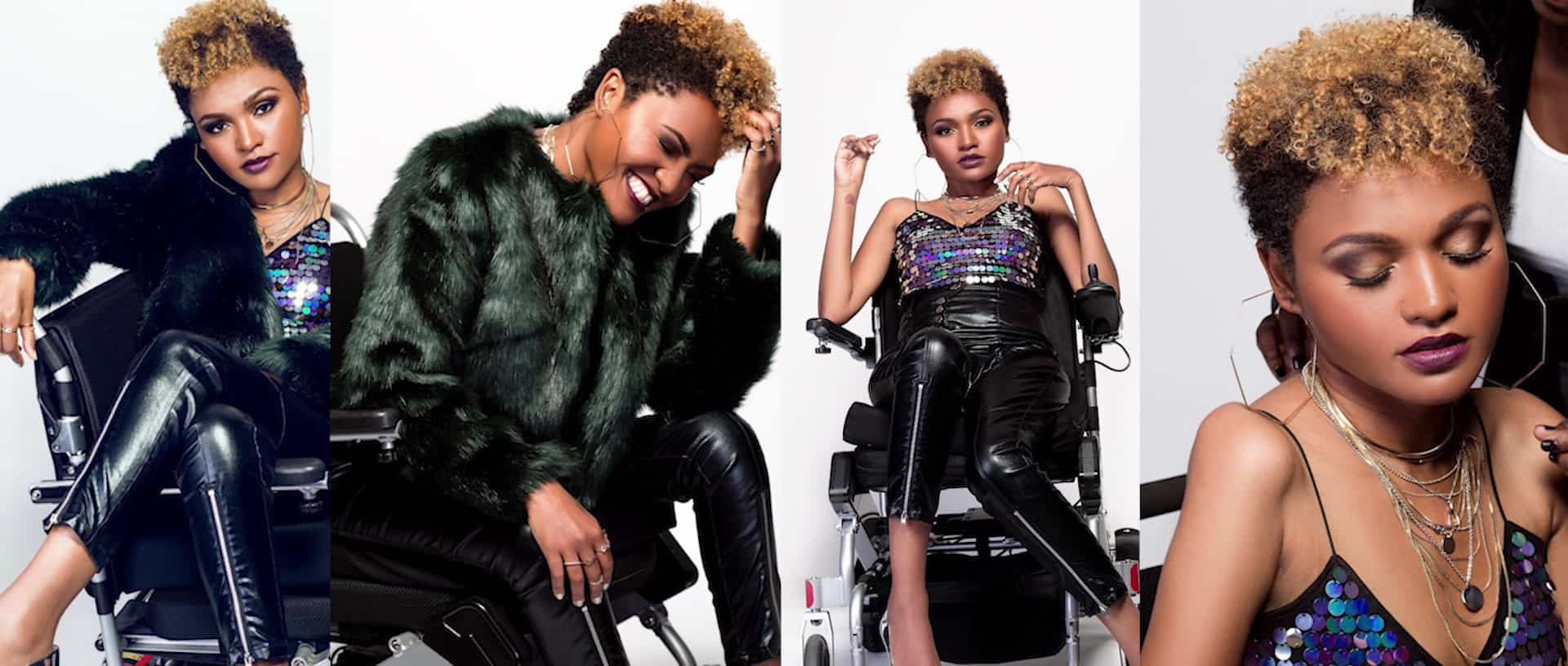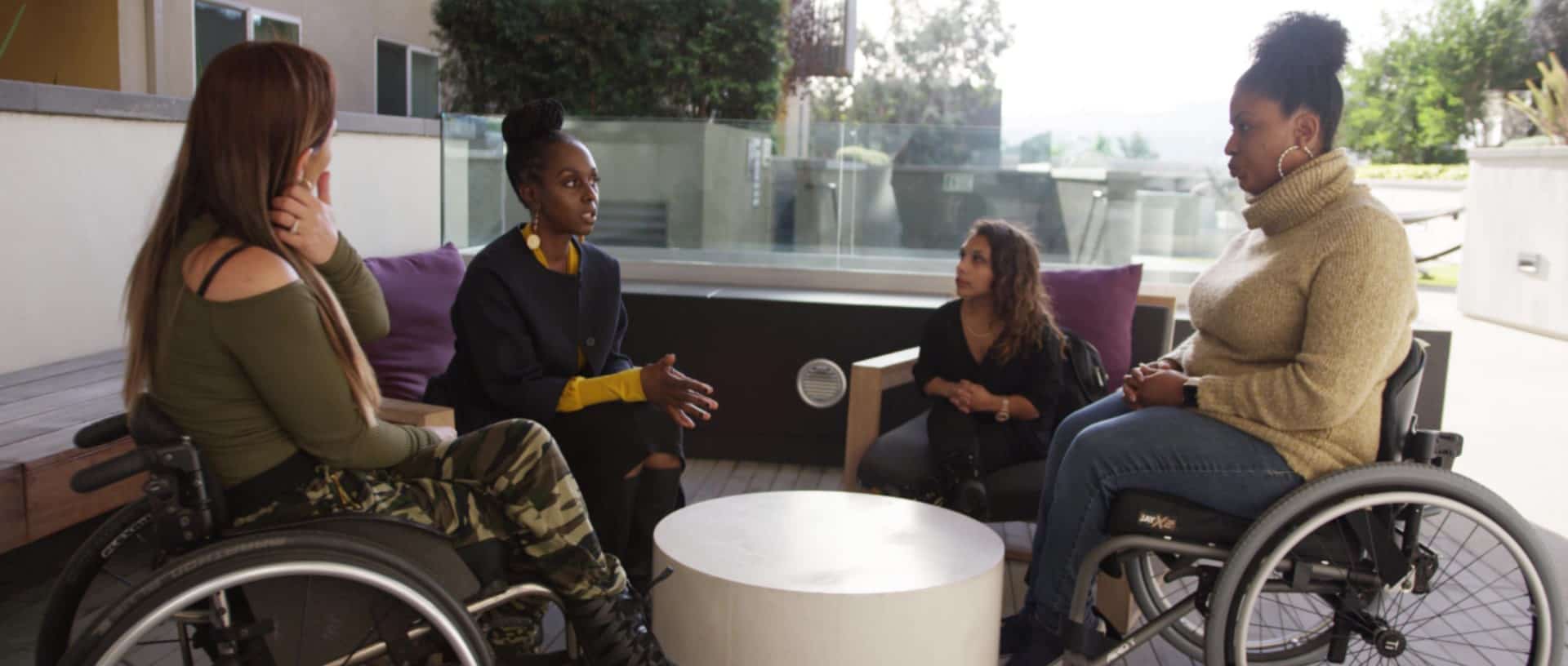As a fashion stylist and the creator of Cur8able, a disability fashion lifestyle website, Stephanie Thomas empowers those with disabilities to navigate their lives and present themselves to the world the way that they want to, not the way that they are often forced to due to lack of options. Her life’s work is a three-part litmus test she developed in 2004 called the “Disability Fashion Styling System.”
Thomas hopes to address a gap in the styling industry: what it is like to dress with disabilities. “I know what it’s like to feel like you never measure up because you hold this secret and shame,” Thomas says. “I know what it’s like to walk through this personally, and I don’t want to see people miss such special moments in their lives because they’re worried about something that I can help them not worry about.”
Here’s how her curiosity and drive, coupled with what she learned at Academy of Art University (she received her master’s in fashion journalism in 2013), led her to redefine what is possible in the competitive and often insular world of fashion.
Journey & Inspiration
Thomas is not only a tenacious entrepreneur, but also a trailblazer. She was a professional cheerleader for the Chicago Bulls two years before attending college—after doctors said she’d never be able to walk or dance because she was born missing toes on both of her feet and is also missing her right thumb.
She was also the first in her family to achieve an undergraduate degree and has been an adjunct professor for 16 years.
While the 2004 launch of Cur8able and her trademarked Disability Fashion Styling System came from a personal need, it was simultaneously a chance to help create a once-uncommon product for others who face similar challenges as she does living with what she calls a “non-severe disability.”
She remembers clearly the moment of inspiration.
In 1992, she participated in a beauty pageant, and the director asked why she didn’t ever button her left cuff. Thomas explained that it was because she doesn’t have a right thumb.
“I had never really thought about it before then, but that’s what led me to what I’m doing now,” Thomas says. “Had you caught me five years ago, I would have stumbled when trying to tell you what I feel defines my creative work. When you’re trailblazing, your story has to be honed and nurtured. I had to learn how to tell my story.”
Founding Cur8able & TED talk
With Cur8able, a “disability fashion lifestyle hub,” Thomas hopes to provide an inspirational and empowering space for those with disabilities or physical challenges to present themselves to the world on their own terms, rather than within the confines of the mainstream fashion market.
When founding her company, Thomas knew that there is rarely such a thing as “overnight success,” especially in pursuing fashion careers. Even so, she dedicated her life to making a difference for others. Her passion, as well as what she refers to as “her legacy,” is to share the message that people with disabilities can live full lives.
During a speech at TEDxYYC in 2016, she shared her mission of imparting confidence, reassurance and self-reliance to those with disabilities.
Cur8able’s message was borne from more than 20 years of research of the clothing industry and retail trends for people with disabilities, resulting in clothing that, Thomas says, is “accessible, smart and fashionable.”
She has found brands that are universally easy to put on and wear, or those that are tailored towards people with disabilities.
Thomas felt that it was important for the fashion market to get past myths that all people with disabilities are the same or that designing for them is too difficult.
Thomas points out that for decades, the fashion industry has designed for niche markets. “If we can dress the segments of maternity wear or those that design for haute couture-worthy pets, why can’t we also design for those with disabilities?” she says. “There are 1.3 billion people across the word with various disabilities. So how can we not design for them? It’s a need and it’s a smart business.”
How did Thomas make this journey happen for herself, while also addressing other people’s needs?
Time at the Academy & Taking the First Step
Academy of Art University played a significant role in helping her shape her story. Before attending school, she was “floundering like a fish that accidentally jumped out of its bowl,” she says. Thomas had no idea how to package her brand in a way that made sense to other people.
Then it dawned on her that she needed to learn everything she could about fashion, journalism and the industry overall, so she could “respectfully tell the story.” At the Academy, Thomas was given a new way of talking about her work that was not guilt-ridden. And for that, she will always be grateful. She reflects, “I finally got the tools—and actually the idea of taking my work and describing myself as a ‘stylist’—that’s all Academy of Art.”
According to Thomas, the School of Fashion’s journalism program showed her how to frame the work she was doing and equipped Thomas with what she needed to tackle disability fashion styling from a perspective the fashion industry would understand.
“Alumni like Stephanie Thomas are testament to the fact that the Academy provides its students the knowledge and tools to succeed in the real world,” says Stephan Rabimov, Director at the Academy’s Fashion Journalism & Social Media Center in the School of Fashion. “Her passion for advocacy has landed Thomas a unique position and opportunity that spans fashion journalism, design, styling and social media. This precise interdisciplinary nature of her work remains the guiding vision for our fashion journalism program at the University.”
Legacy in the World of Fashion
After seeing changes in legislation and buildings after the passage of the Americans with Disabilities Act in 1991, Thomas developed her own Disability Fashion Styling System. With her writing and her work in fashion and styling, she hopes to plant a seed in someone’s life.
“In 20 years, when people think of me, I want them to say, ‘Wow, she used fashion as a tool to empower people with disabilities so that people are able to see them,'” Thomas says. “People will not see their deficiencies, but eye-to-eye as equals.”
Even though she doesn’t have “a million followers,” she still considers herself a taste-maker.
“If just one person can come to my site and have their life changed or get insight or build value, then I don’t care if it never grows. I’ve done my job,” Thomas says. “I’ve been researching and talking about this for a long time. I now have the opportunity to see my efforts come to life.”
She is ultimately hoping for the day when there isn’t a need for a site such as Cur8able.
“I can’t wait for the day when fashion for the disabled is so commonplace that designers automatically think of disability when they think of designing shoes and clothing,” she says. “I hope, when people read my story, they redefine ‘impossible.’”




